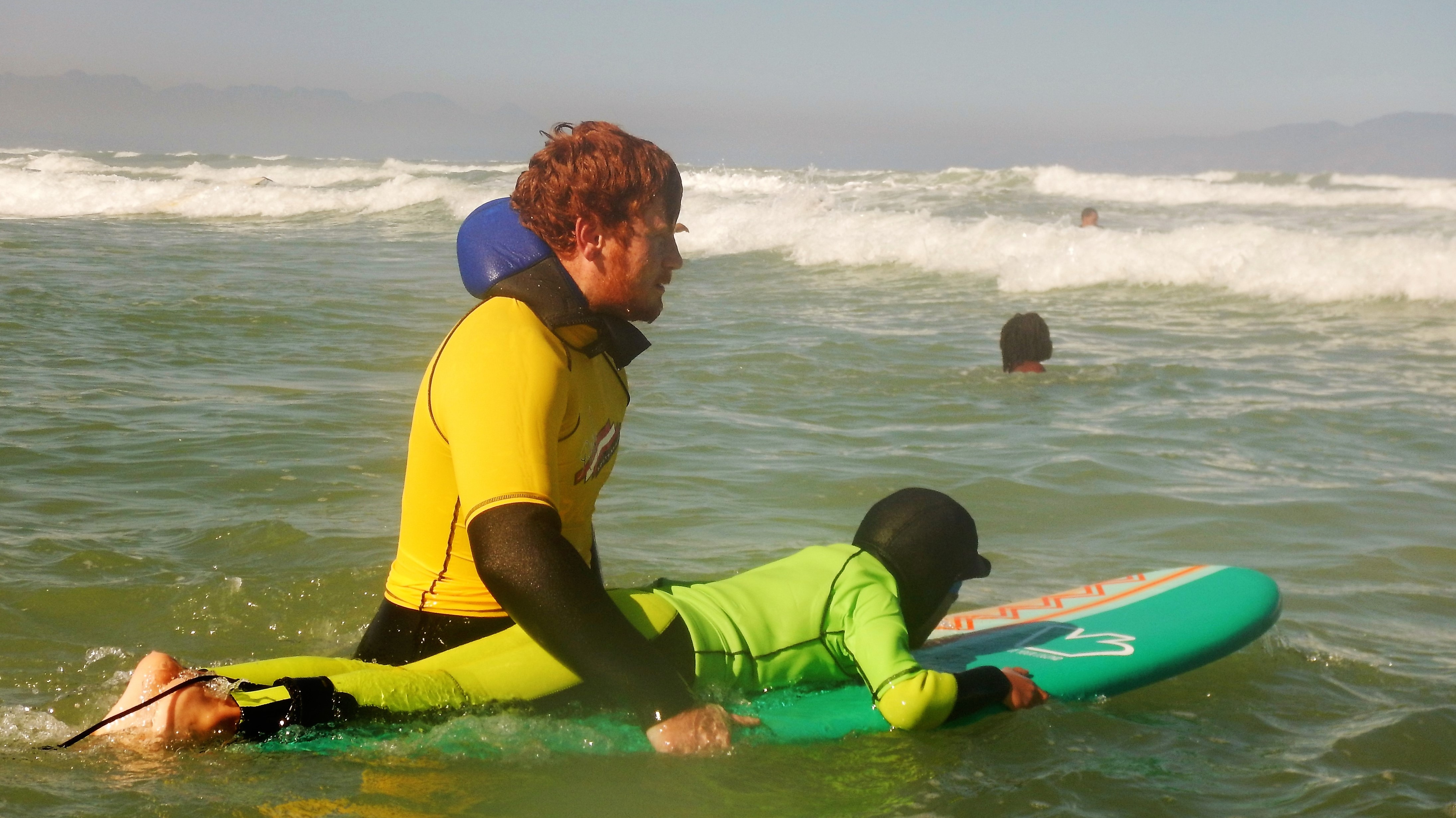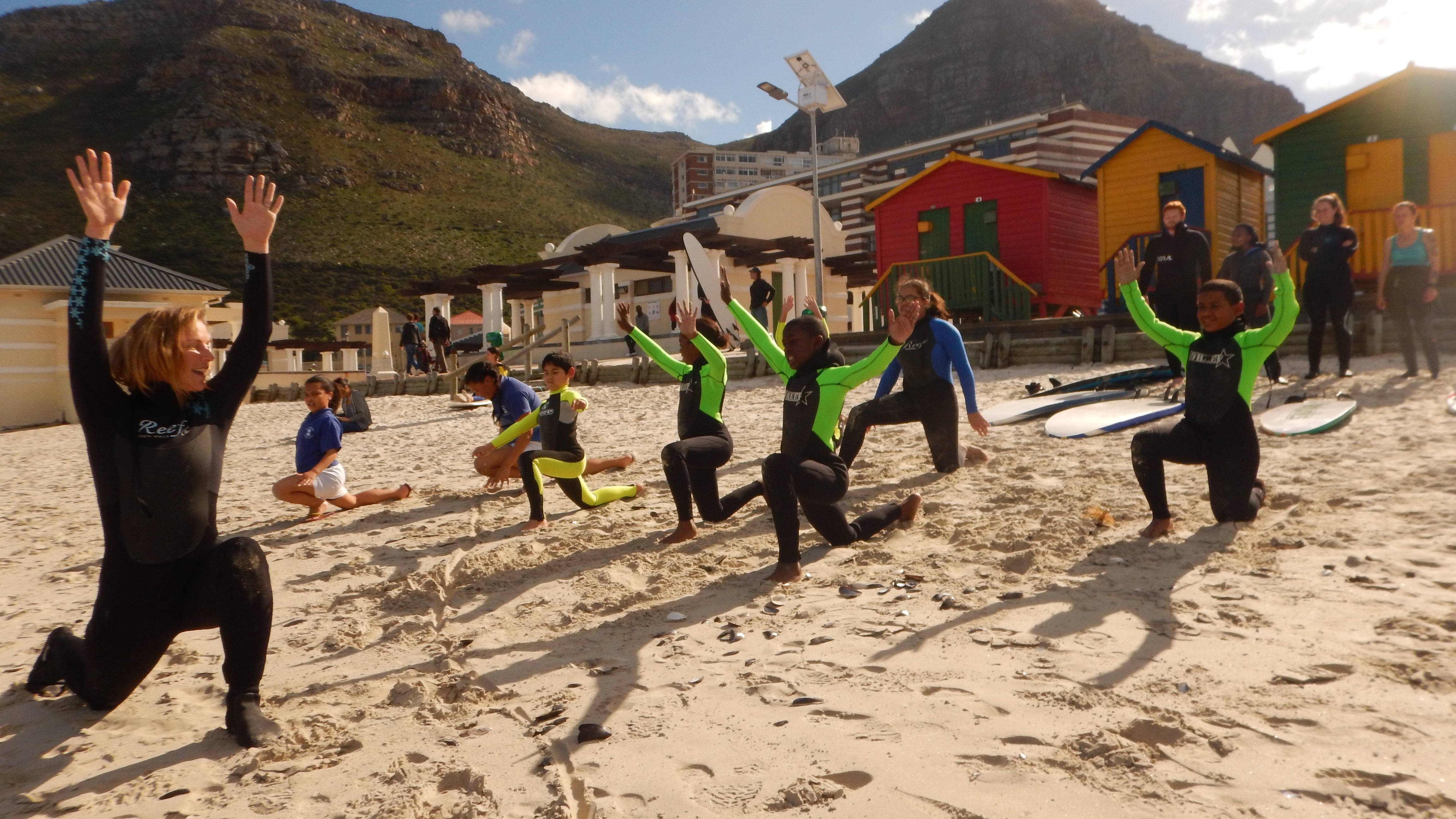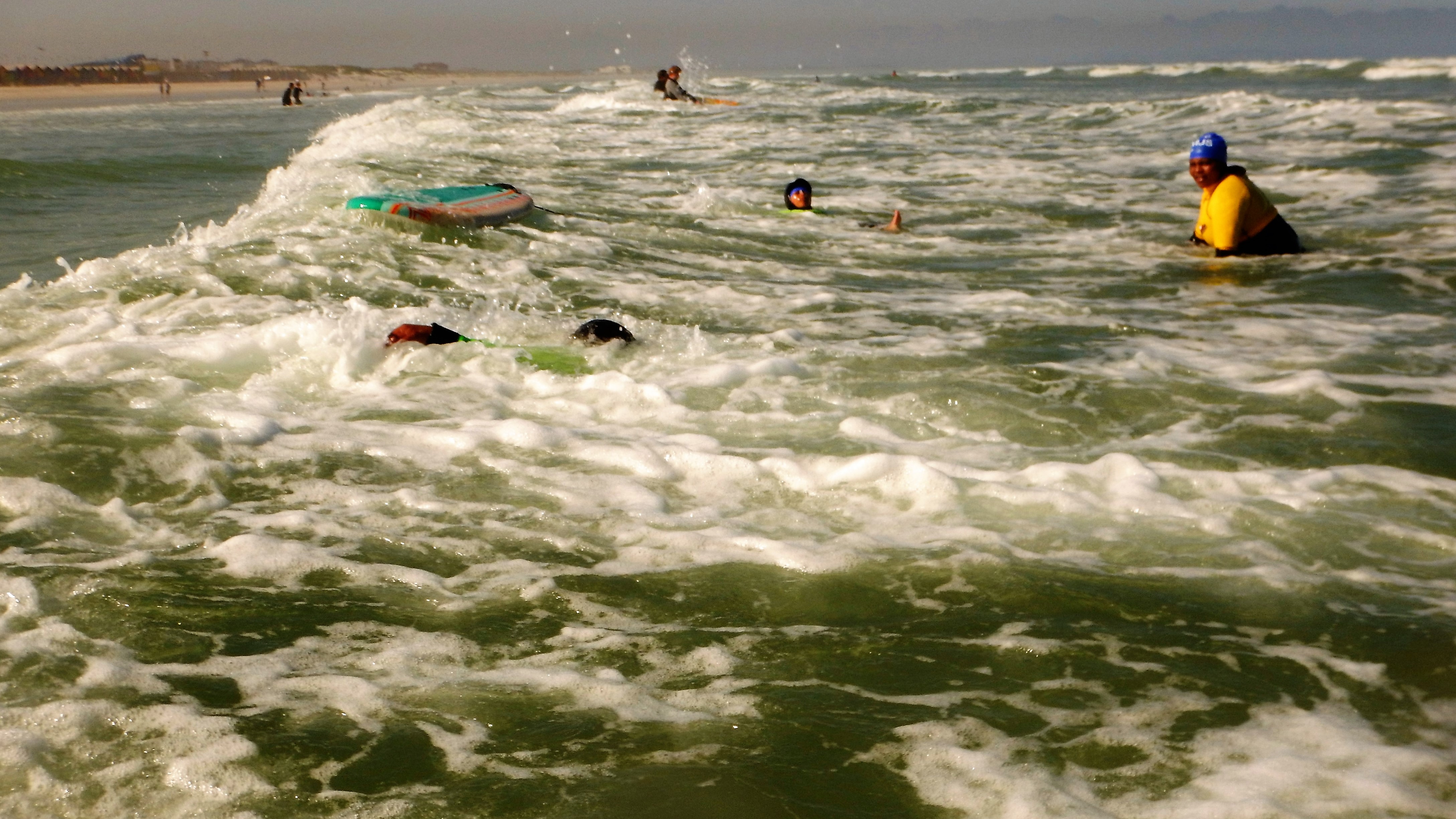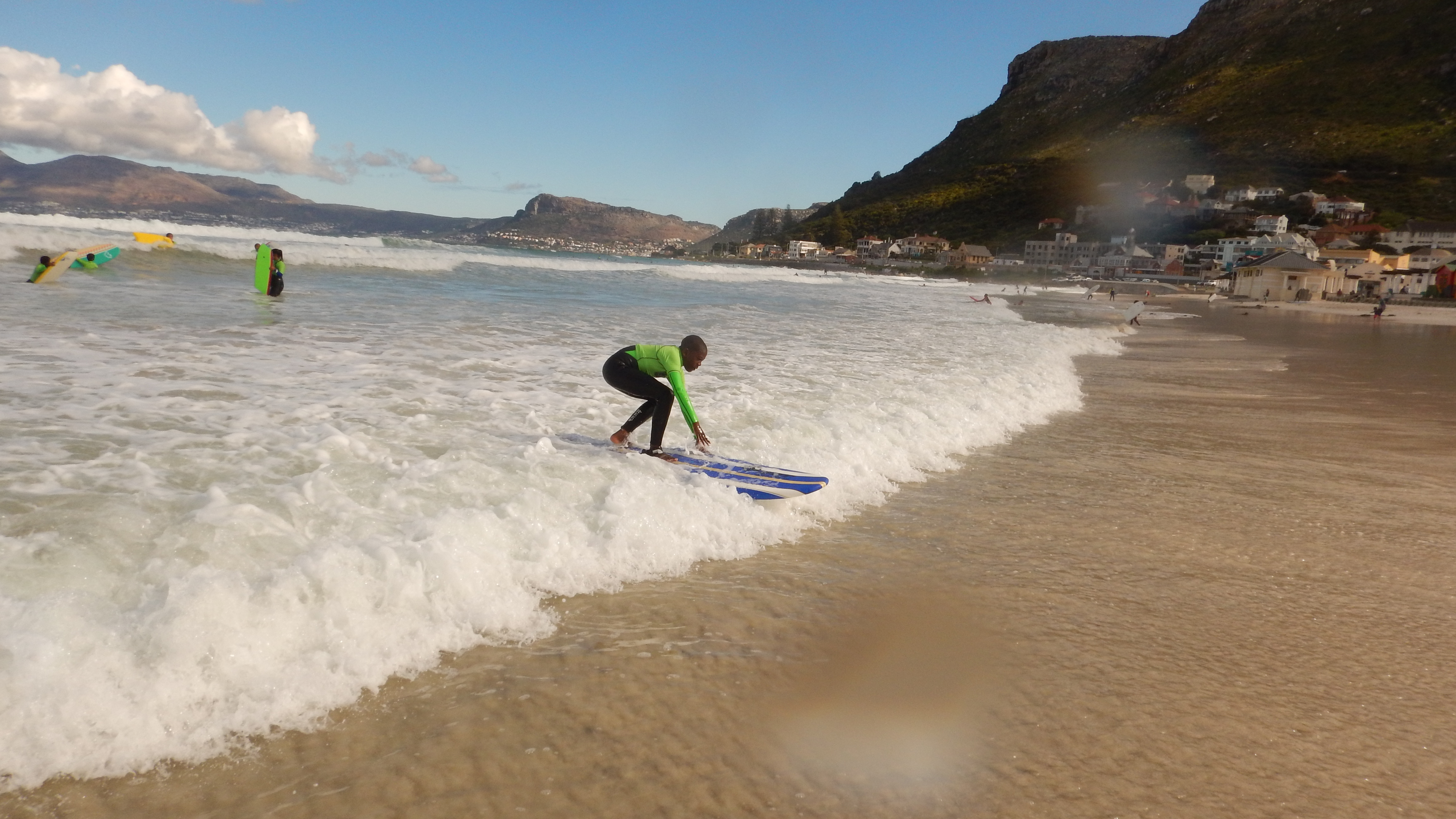How to learn to surf (safely!)
In the surfing component of our Marine Explorers programme, our aim is to develop water-confidence and a love for the oceans. We are not focussed on producing the next world champ – the most successful surfer in our group on any given day, is the kid with the biggest grin! As mentioned in the last blog post on this topic, there’s a limit to how much can be taught – for the most part surfing is something that the beginner needs to figure out for themselves, and this can (and should) be a whole lot of fun. But there are a few tips to offer, and the priority must always be safety. So, before you plunge into what could well be the most enjoyable activity you’ve ever tried, take a moment to take these safety tips on board:

10 Safety tips for beginner surfers
1. Don’t bother learning to surf until you’ve learnt to swim!
2. Get advice from other surfers, surf shops, surf schools etc. as to which local spots are suited to beginners. If in Cape Town, it’s simple – just go to Muizenberg! Never paddle out at a surf spot when no-one else is in the water.
3. Use a soft board (and always a leash) until you have made a little progress. That way you shouldn’t cause board-induced injuries to yourself or anyone you crash into!
4. Always spend a few minutes stretching before you enter the water – this will relax you and lessen the chance of getting cramps, which can become dangerous while surfing. While stretching, look at the waves before paddling out, so as to gauge currents, wave size and crowd. Here in Cape Town, check to see what flag shark spotters are flying.

5. Avoid having your board between you and approaching waves – the waves will wash your board into you.
6. Keep your distance from other surfers – at most beginner surf spots, the biggest risk is being hit by someone else’s board. This means not paddling out directly behind another surfer (whose board could be washed into you), not catching the same wave as another surfer and not catching a wave unless the “runway” is clear of other water-users.

7. Never push your board through the water fins first. The fins were made to keep the board pointing nose first. Pushing the board fins first can be quite dangerous because the board will shoot off in an unpredictable direction.
8. When you fall off your board, cover the back of your head with your arms and stay under water for a moment longer than seems necessary.
9. Don’t surf into very shallow water – you could injure yourself by landing head first onto the sand. You’ll also break the fins on your board.

10. Constantly keep an eye on your position – currents can pull you along the beach, or out to sea. Line up with stationary objects on the shore (like a pole, tree or a building etc.). If you are unable to paddle against a current, rather paddle across it.
In our next post, we’ll look at how to ensure that learning to surf is fun. Watch this space…
